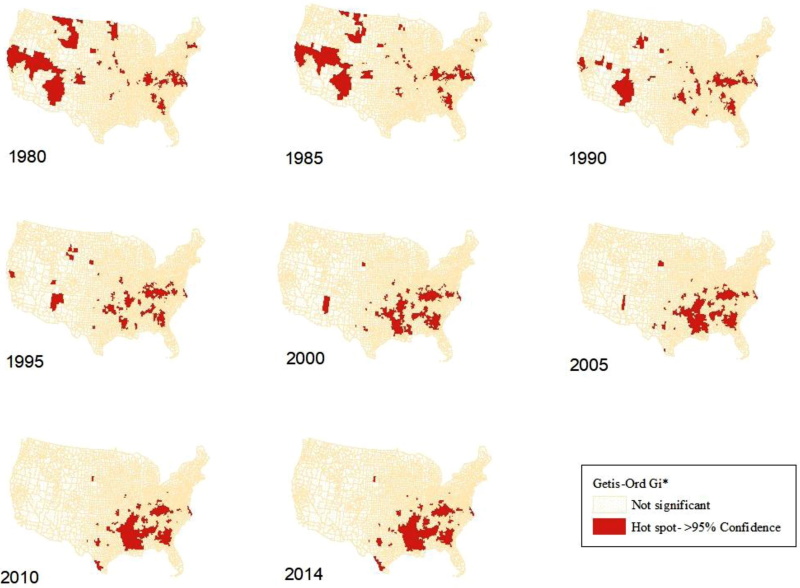
BHATTARAI, MOLLALO – Predicting the hotspots of age-adjusted mortality rates of lower respiratory infection across the continental United States: Integration of GIS, spatial statistics and machine learning algorithms
Abolfazl Mollalo, Behrooz Vahedi, Shreejana Bhattarai, Laura C.Hopkins, Swagata Banik, Behzad Vahedi
Article first published online: 22 AUG 2020 International Journal of Medical Informatics
DOI: 10.1016/j.ijmedinf.2020.104248
ABSTRACT:
Objective
Although lower respiratory infections (LRI) are among the leading causes of mortality in the United States, their association with underlying factors and geographic variation have not been adequately examined.
Methods
In this study, explanatory variables (n?=?46) including climatic, topographic, socio-economic, and demographic factors were compiled at the county level across the continental US. Machine learning algorithms – logistic regression (LR), random forest (RF), gradient boosting decision trees (GBDT), k-nearest neighbors (KNN), and support vector machine (SVM) – were used to predict the presence/absence of hotspots (P?<?0.05) for elevated age-adjusted LRI mortality rates in a geographic information system framework.
Results
Overall, there was a historical shift in hotspots away from the western United States into the southeastern parts of the country and they were highly localized in a few counties. The two decision tree methods (RF and GBDT) outperformed the other algorithms (accuracies: 0.92; F1-scores: 0.85 and 0.84; area under the precision-recall curve: 0.84 and 0.83, respectively). Moreover, the results of the RF and GBDT indicated that higher spring minimum temperature, increased winter precipitation, and higher annual median household income were among the most substantial factors in predicting the hotspots.
Conclusions
This study helps raise awareness of public health decision-makers to develop and target LRI prevention programs.
Read the full publication at International Journal of Medical Informatics